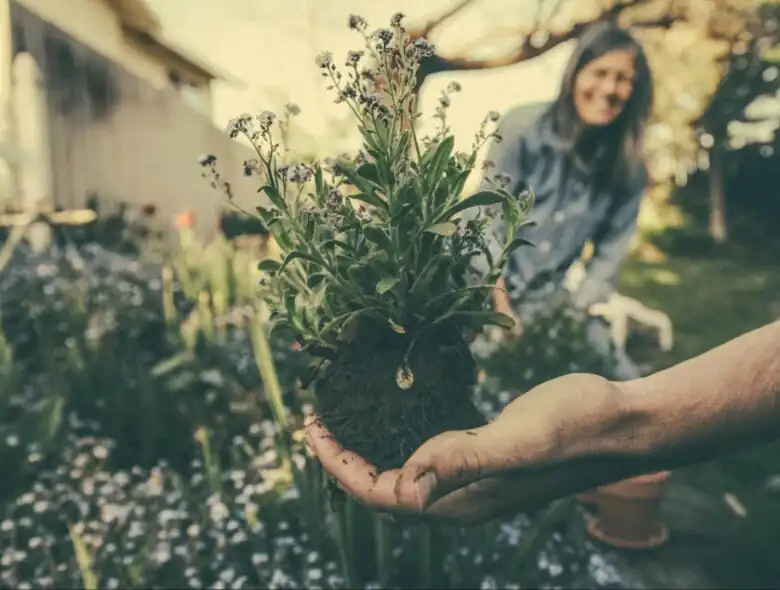Space is often a luxury here in Japan, especially for private outdoor spaces, which can be a difficult barrier for people who want to begin gardening.
Living in bustling urban environments often means sacrificing spacious gardens for compact apartment living and tiny balconies. And this often means there is no real soil space at all – and so apartment living and gardening do not always go hand-in-hand.
However, with some creativity and the right techniques, any balcony can be transformed into a thriving green oasis!
In this article, we’ll share with you the best tips and tricks that gardening beginners should know. These work for even the smallest of spaces and will ensure you have a successful start to apartment gardening. Please give it a try!
Are you looking for a new home where you can realize all your apartment gardening dreams? With properties all across Japan, affordable rent prices, and low upfront costs, Village House’s rental apartments are a great choice for budget-conscious people.
Japanese Balcony Garden: Maximizing Minimal Space
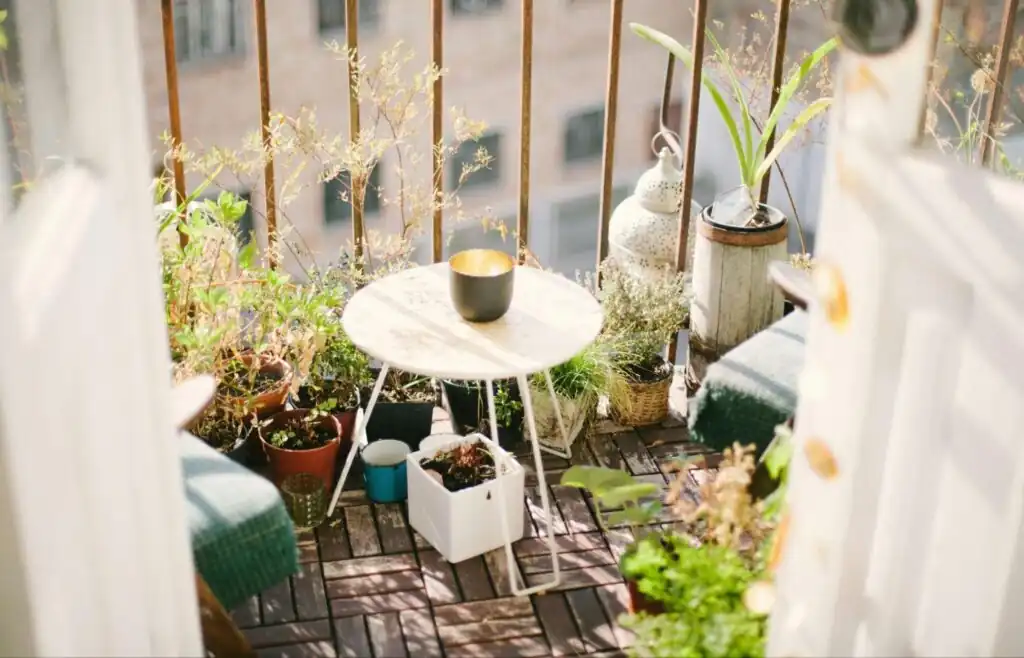
Living in an apartment most likely means that you have no garden and only a small balcony as your private outside space. This makes many people feel that they cannot get into the great world of gardening. However, even in tiny apartments, it is not as impossible or difficult as it may seem!
If you have access to a balcony, rooftop, terrace, or patio, you can still grow a wide range of veggies, herbs, perennials, flowers, and vines in containers.
To do so successfully, it’s most important that you choose the right plants for your site, and not waste space on something that is not going to thrive. The amount of water a plant needs is one of the points you need to clarify first, but you should also consider the location and direction which your balcony is facing, which influence other critical factors, such as the amount of sunlight and wind your plants will be exposed to.
Does your balcony face south and receive DIRECT sun all day long? If so, cacti, many flowers, and most vegetables—if kept well-watered—will love it there.
If your balcony faces north or is shaded by other buildings for most of the day, you should instead consider low-light plants such as ferns, hostas, and begonias.
Many people overestimate the amount of sun they get on their balconies. Keep in mind that most veggies need a minimum of 6 to 8 hours of sun a day to grow well and produce fruit. However, some edible salad greens like chard, spinach, or lettuce, as well as some herbs, can grow with less than a half day of sun.
Gardening Tools: Essentials
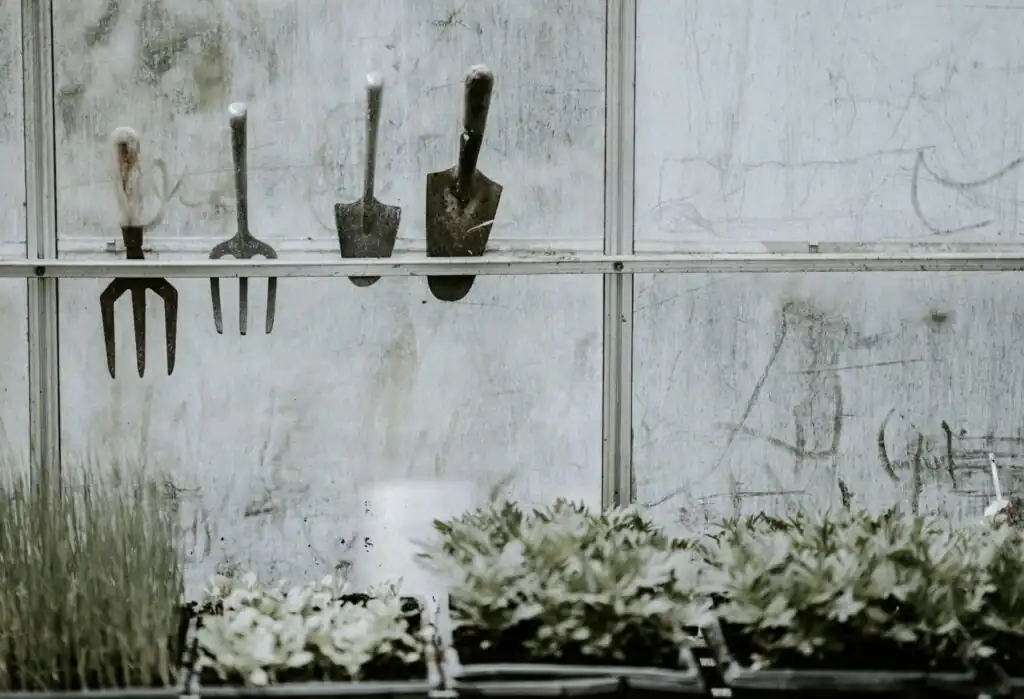
You don’t need a shed full of tools to start your balcony garden! All you need to invest in are a few key essentials, such as hand trowels, pruning shears, and a watering can.
It is recommended to opt for lightweight and compact tools, as these are easy to keep in small apartments with limited storage space.
Another tool that is beneficial to have, is a portable soil moisture meter, which helps you to ensure your plants receive the right amount of water and prevent overwatering or underwatering.
As for pots for your plants, you should avoid overloading your balcony with anything that might be too heavy, such as terracotta pots. It is better to choose plastic materials or other lightweight eco-friendly planters instead.
Container Gardening
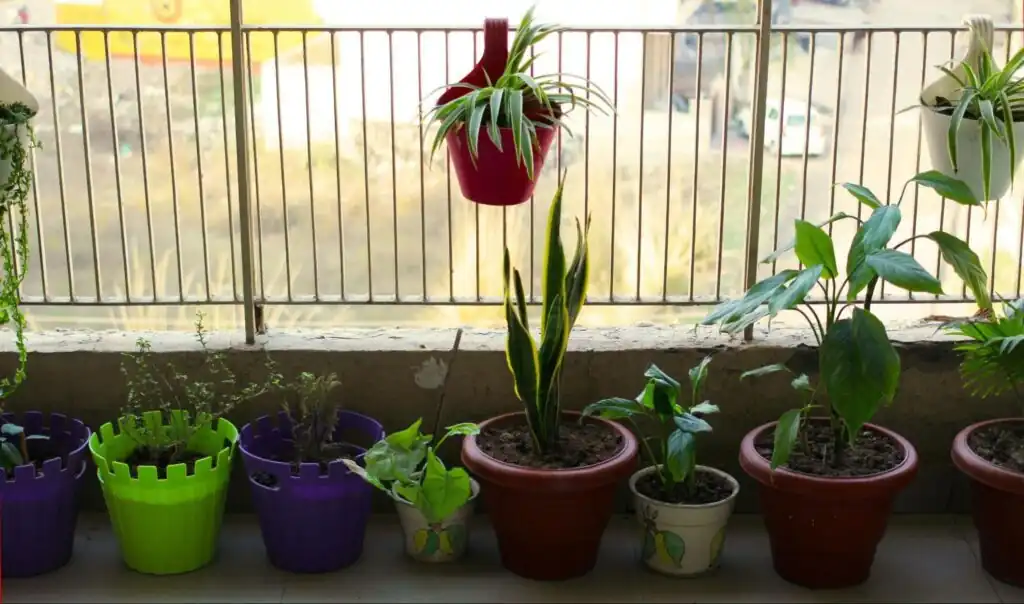
Container gardening is not only a practical solution for small balconies and patios, but visually appealing containers can also be a complementing addition to your balcony’s aesthetic. Just make sure the containers you choose are lightweight and weather-resistant. Now it’s time to mix and match plants of varying heights and foliage for a fun and diverse look!
For healthy root growth and the prevention of waterlogging, you should use a well-draining potting mix. For optimal, lush growth of your plants, you should also not forget to regularly fertilize and prune your plants.
Vertical Gardening
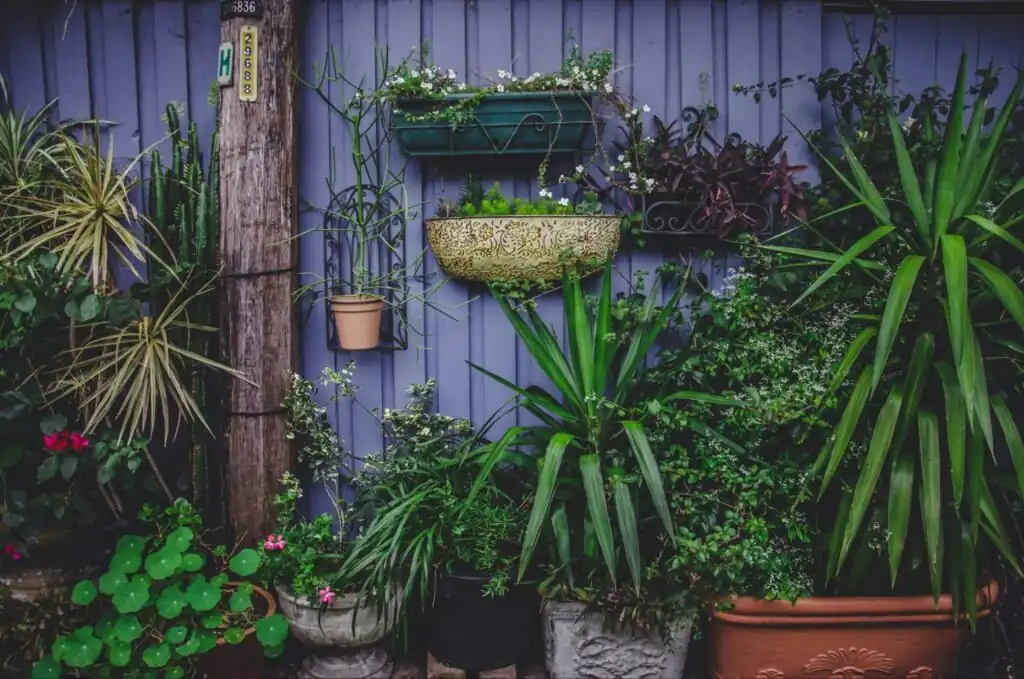
Another game-changer for apartment dwellers is vertical gardening. With this way of gardening, you can make the most of limited space by installing vertical planters or creating a living wall using modular systems. Trailing plants like ivy or cascading flowers such as petunias can add depth and visual interest to it.
You can start a vertical garden by attaching mesh to your outer wall, which you can then hook containers onto.
It’s not even necessary to spend a lot of money on new containers, as almost anything can be used, such as old catering tins of tomatoes, oil, and olives. Just remove their labels and add drainage holes to the bottom of the containers. This can easily be done with a drill.
Now they are ready to be used as decorative pots that add a rustic appeal to your home!
Benefits of Gardening: More Than Just Greenery
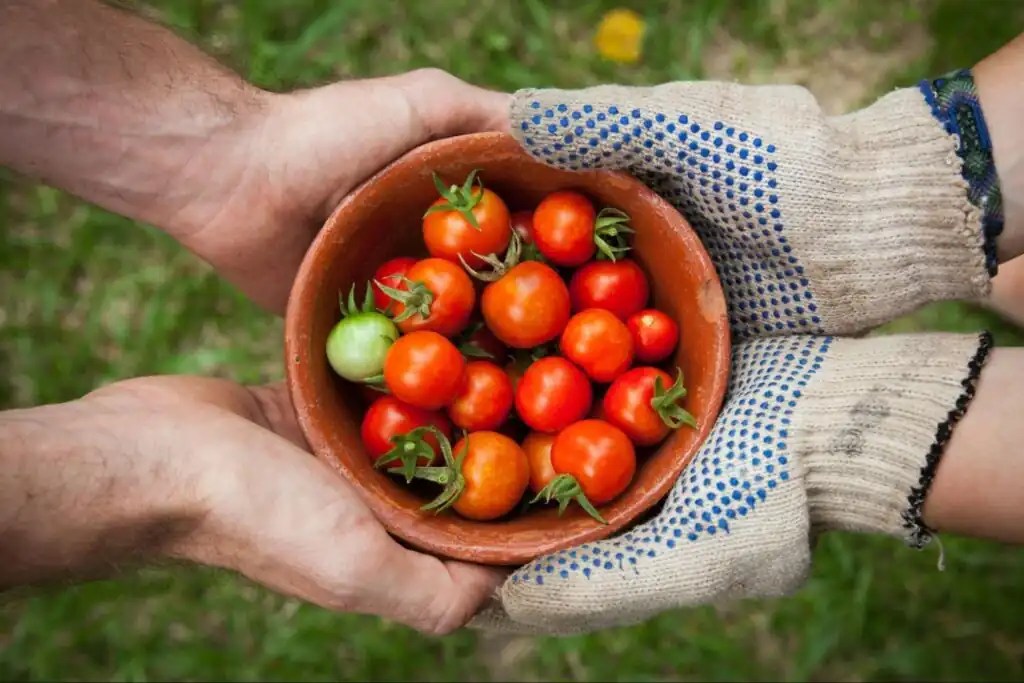
Beyond beautifying your balcony, gardening offers a myriad of benefits. Cultivating plants can reduce stress, improve air quality, and foster a deeper connection with nature.
By growing your own herbs and vegetables, you get to enjoy fresh and flavorful produce year-round. Plus, gardening provides a sense of accomplishment as you watch your plants thrive and flourish in their urban environment.
In conclusion, apartment gardening may present its challenges, but with the right approach and techniques, maximizing vertical space, and choosing the right plants and tools, anyone can create a vibrant green space in even the smallest of balconies.
Happy gardening!
Related articles:
- I’m Moving! What Should I Do With My Plants?!
- Spring Home Decor Ideas
- What are the Basics of Creating a Beautiful Room? Top 5 Tips!
- DIY Apartment Herb Garden
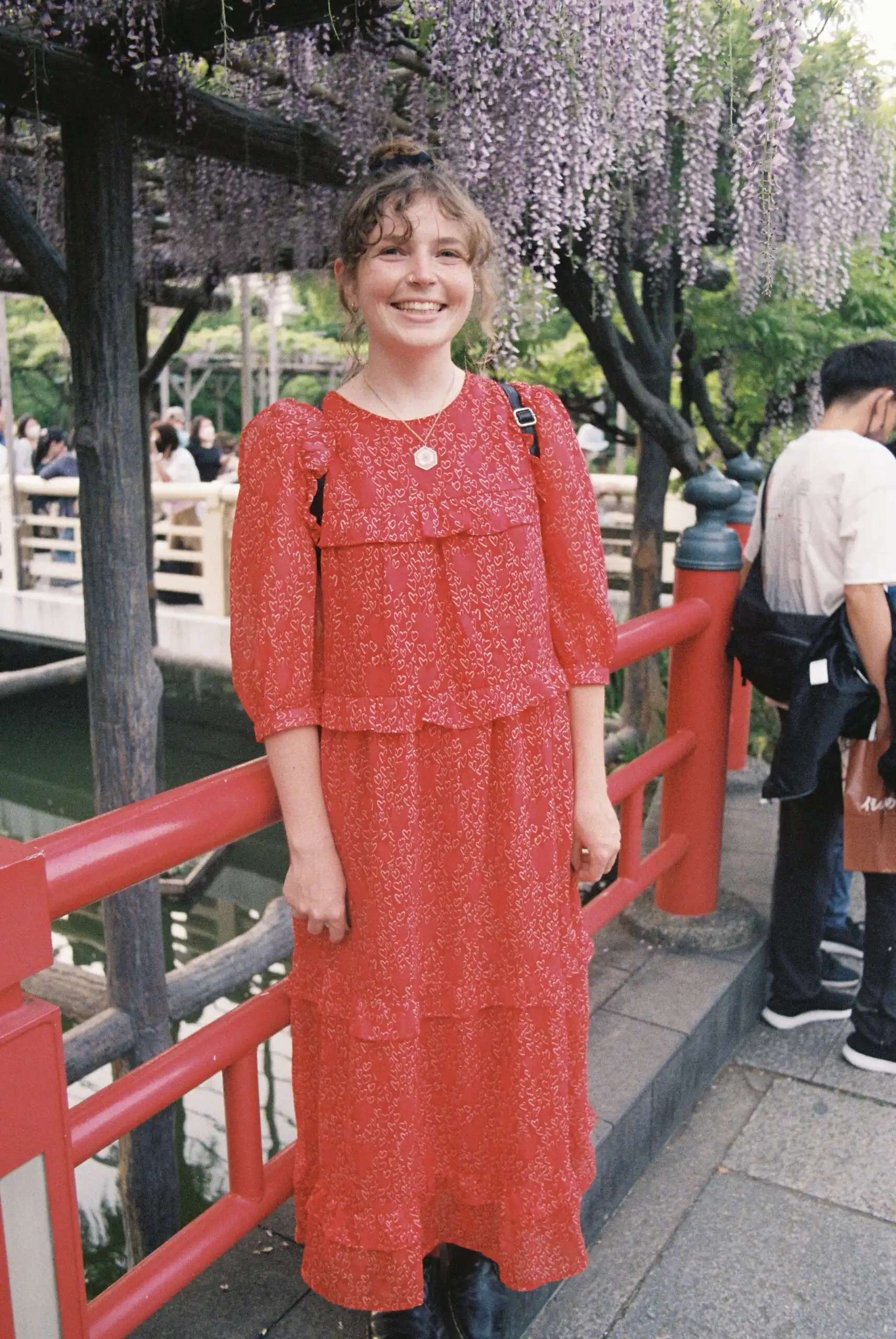
Hello, I’m Jazmine Kelly, a freelance writer who has been writing about travel and interior design for 3 years. My love of travel and exploring countries began at a young age thanks to my adventurous parents who moved our family abroad. I learnt from my Dad how to find great deals for trips and find unique destinations to visit. I moved to Hyogo in March 2020 and haven’t looked back since, always making the most of any adventure! Having lived in various countries and apartments, I’ve learnt the importance of making a house feel like a home. Decorating rented homes on a tight budget allowed me to express my creativity and develop a love for interior design. As well as travelling, I love crafts, interior design, music, and spending time outside in nature.


